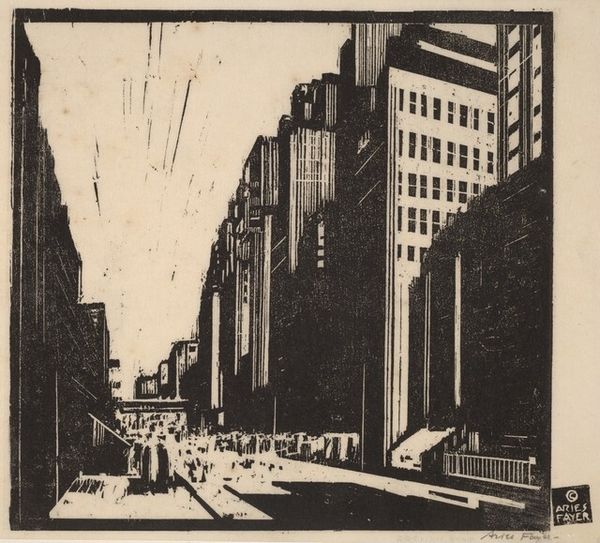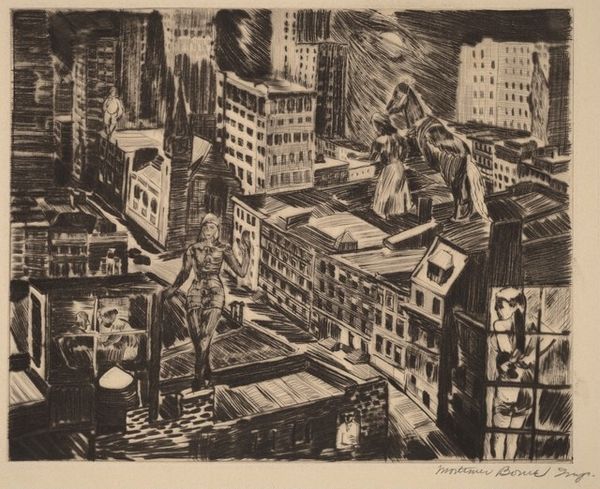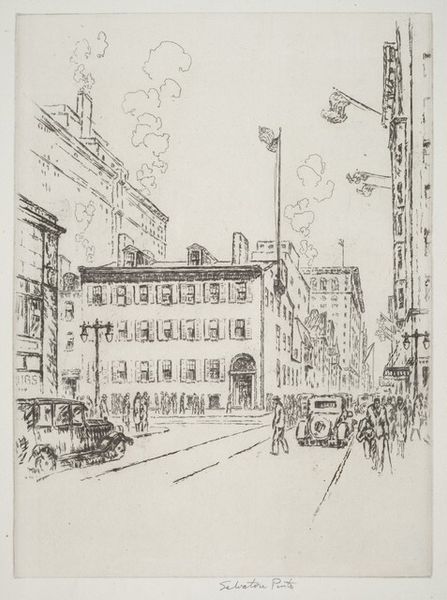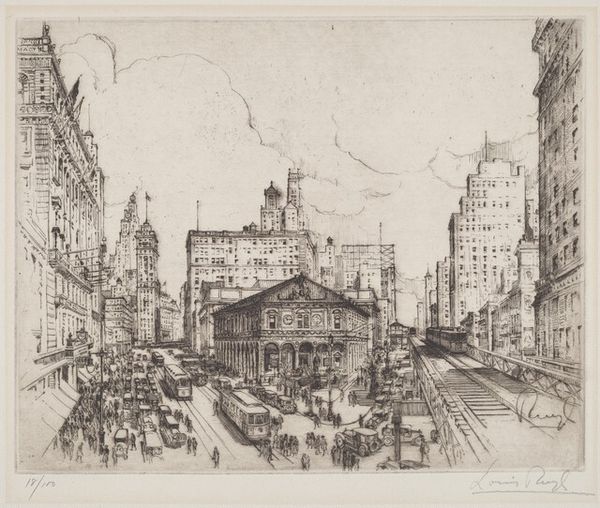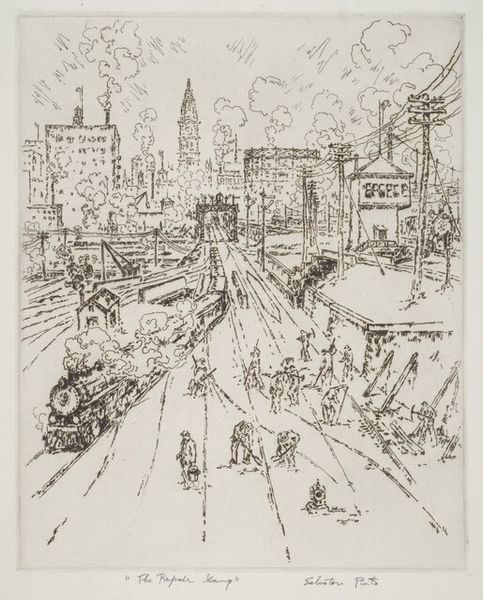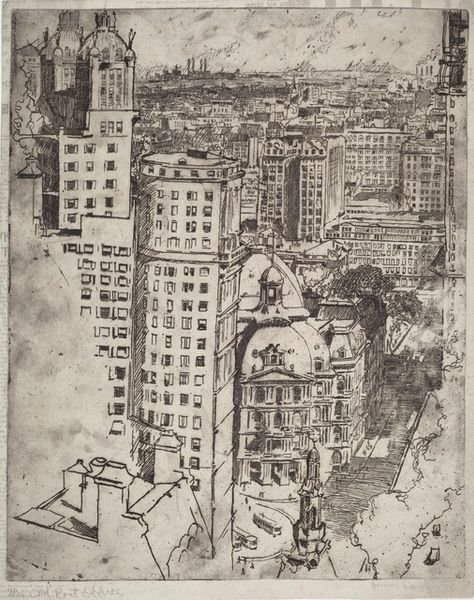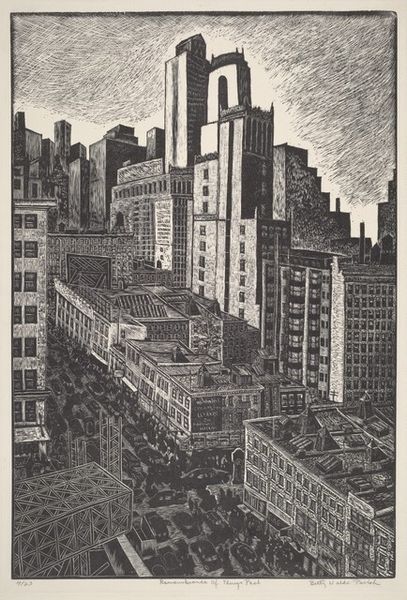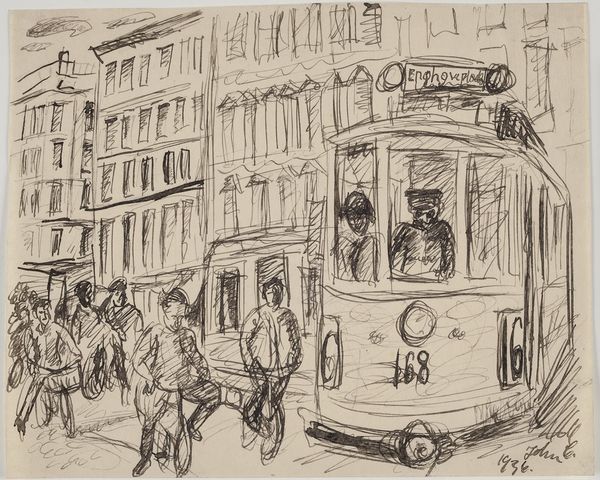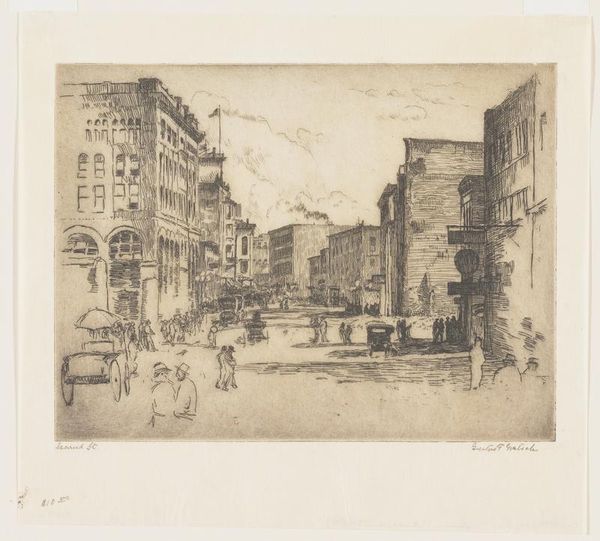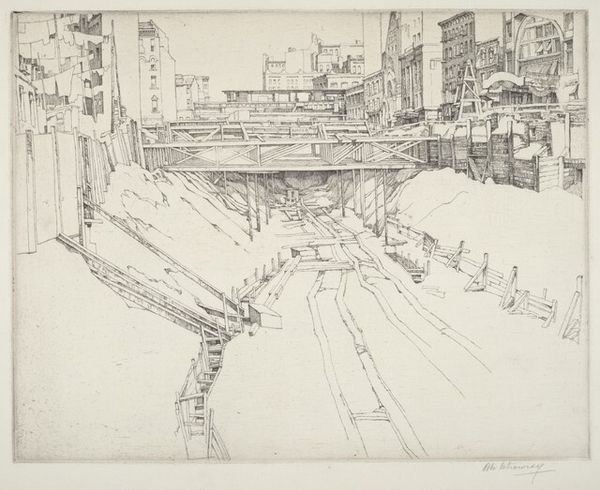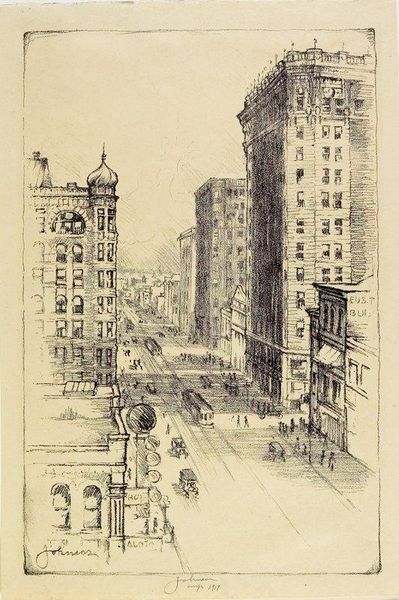
drawing, print, etching, ink
#
drawing
#
ink drawing
# print
#
pen sketch
#
etching
#
pencil sketch
#
ink
#
cityscape
#
modernism
#
realism
Dimensions: Image: 225 x 300 Sheet: 285 x 393
Copyright: National Gallery of Art: CC0 1.0
Editor: This is "Verdi Square" by Mortimer Borne, created in 1935, an etching on paper. The stark lines give the city scene a kind of gritty, bustling energy. It seems both realistic and a little…off somehow. How do you interpret this work through a Formalist lens? Curator: The deviations from photorealism that you mention become entry points. Note how Borne prioritizes the structural elements over accurate depiction. Observe the architectural volumes—the repetitive geometries of windows, the linear perspective compressing space. Consider the etching itself. The density and direction of lines create tonal variations that guide the eye. The artist isn't mirroring reality but constructing a composition with these formal tools. How does the interplay of light and shadow influence your reading? Editor: The dark lines of the buildings against the white paper do create a dramatic contrast and it flattens the picture. So it's less about representing Verdi Square and more about what Borne *does* with the idea of a cityscape? Curator: Precisely. The subject matter is secondary to the artist’s manipulation of form. It’s about how Borne has used line, shape, and the relationships between them to create this sense of urban dynamism. It is less important WHAT is depicted, and far more how it has been depicted and how that generates interest in the viewer. Does the somewhat crude and rushed aspect of some line work detract or add, in your opinion? Editor: Initially, it felt like a flaw, but now I see how the rawness amplifies the immediacy, the energetic "bustle," that I felt upon first seeing the image. I hadn’t thought about that as a *choice*. Thanks! Curator: Formal analysis allows us to move beyond mere representational understanding to appreciate the artist’s active construction of meaning through purely visual elements. Now you have some tools with which to analyse line, perspective and texture.
Comments
No comments
Be the first to comment and join the conversation on the ultimate creative platform.
